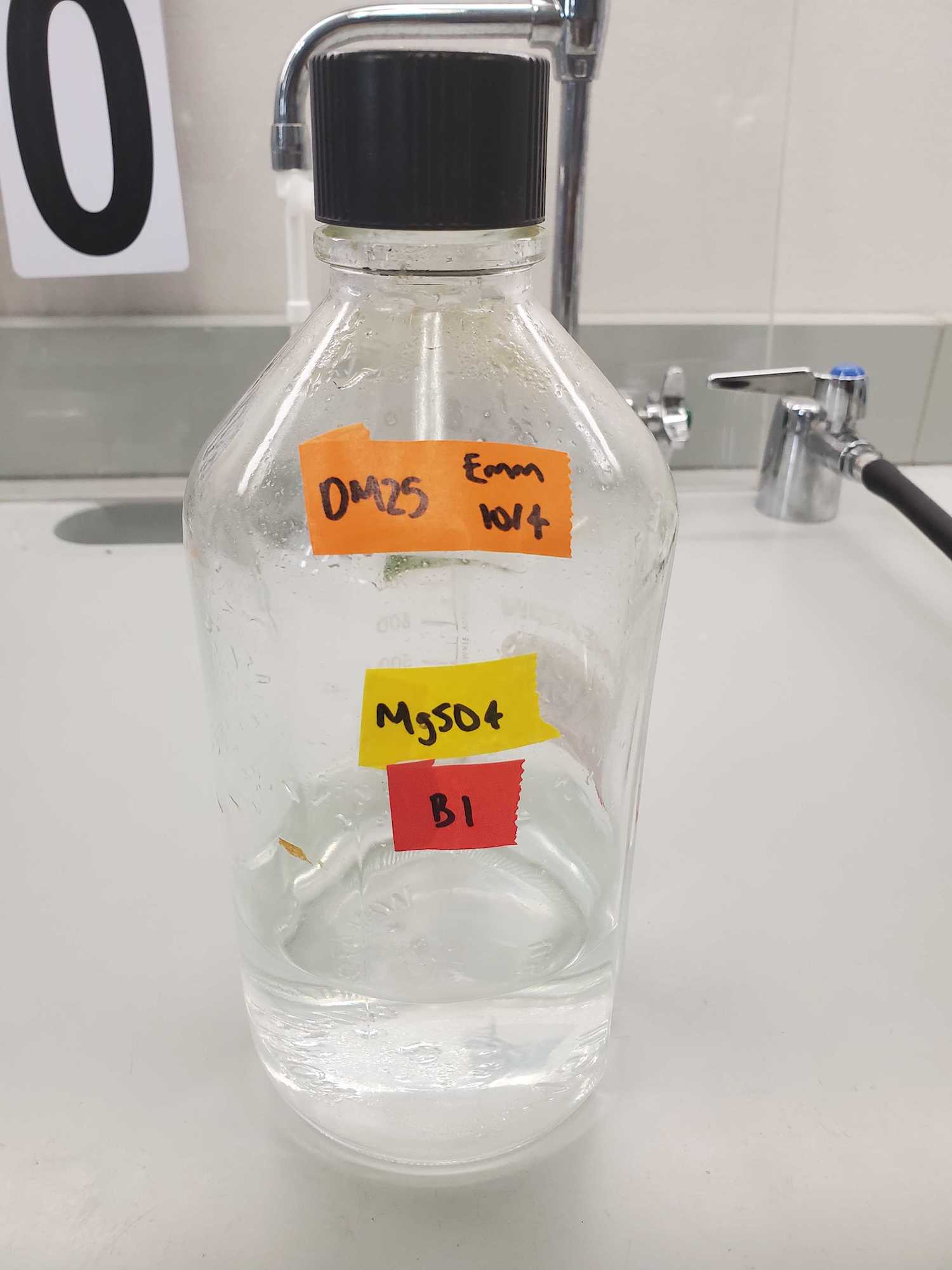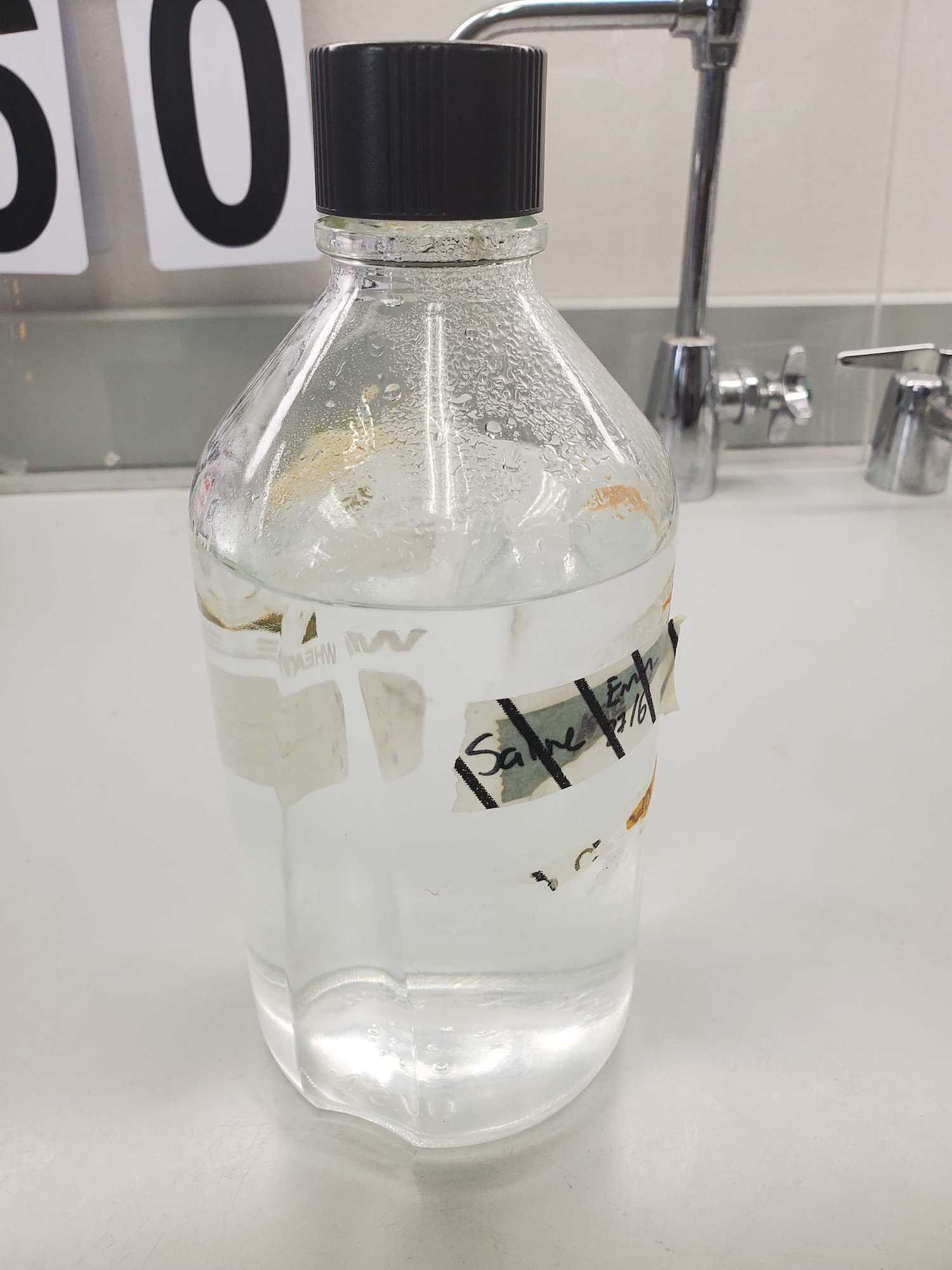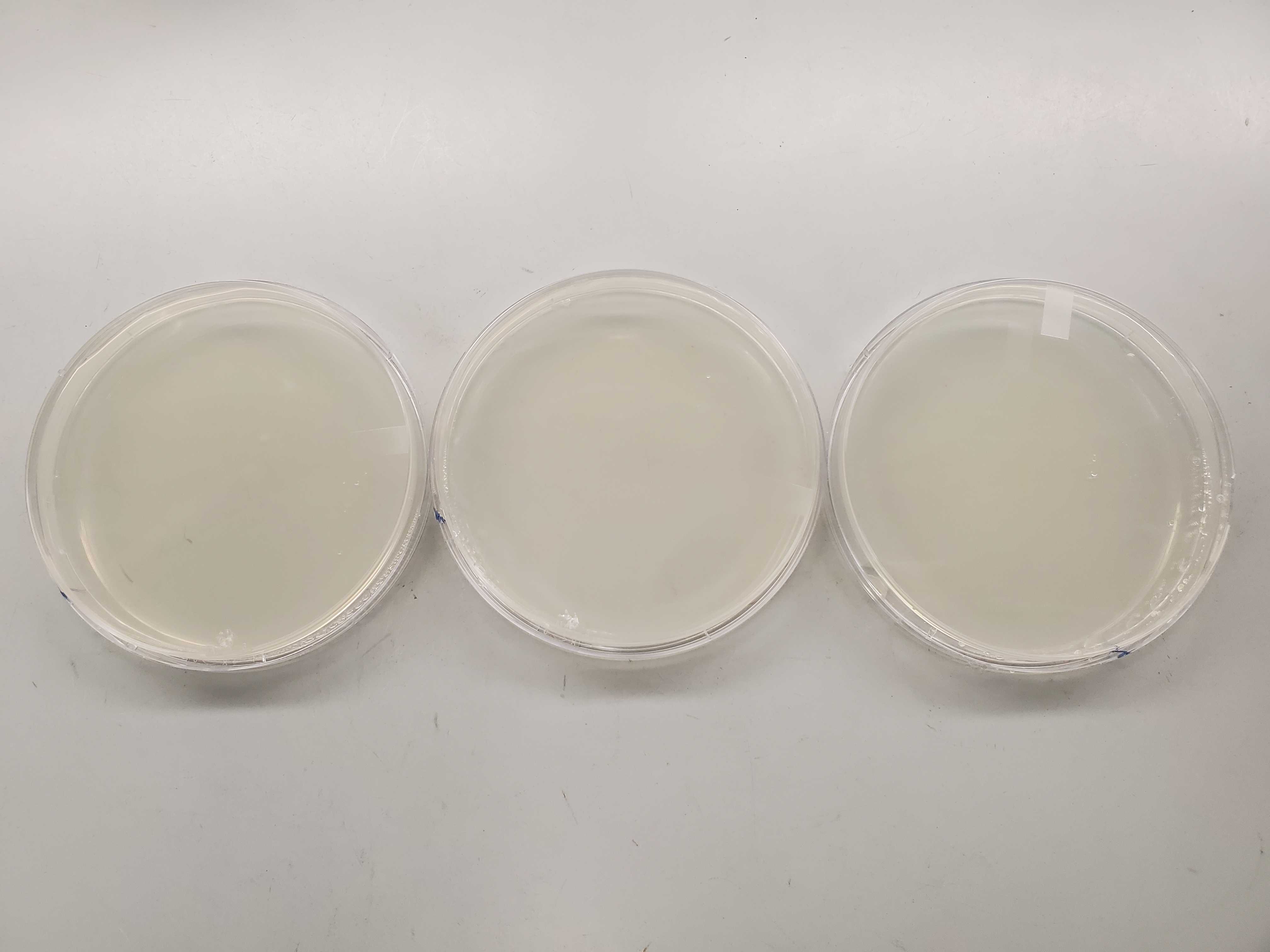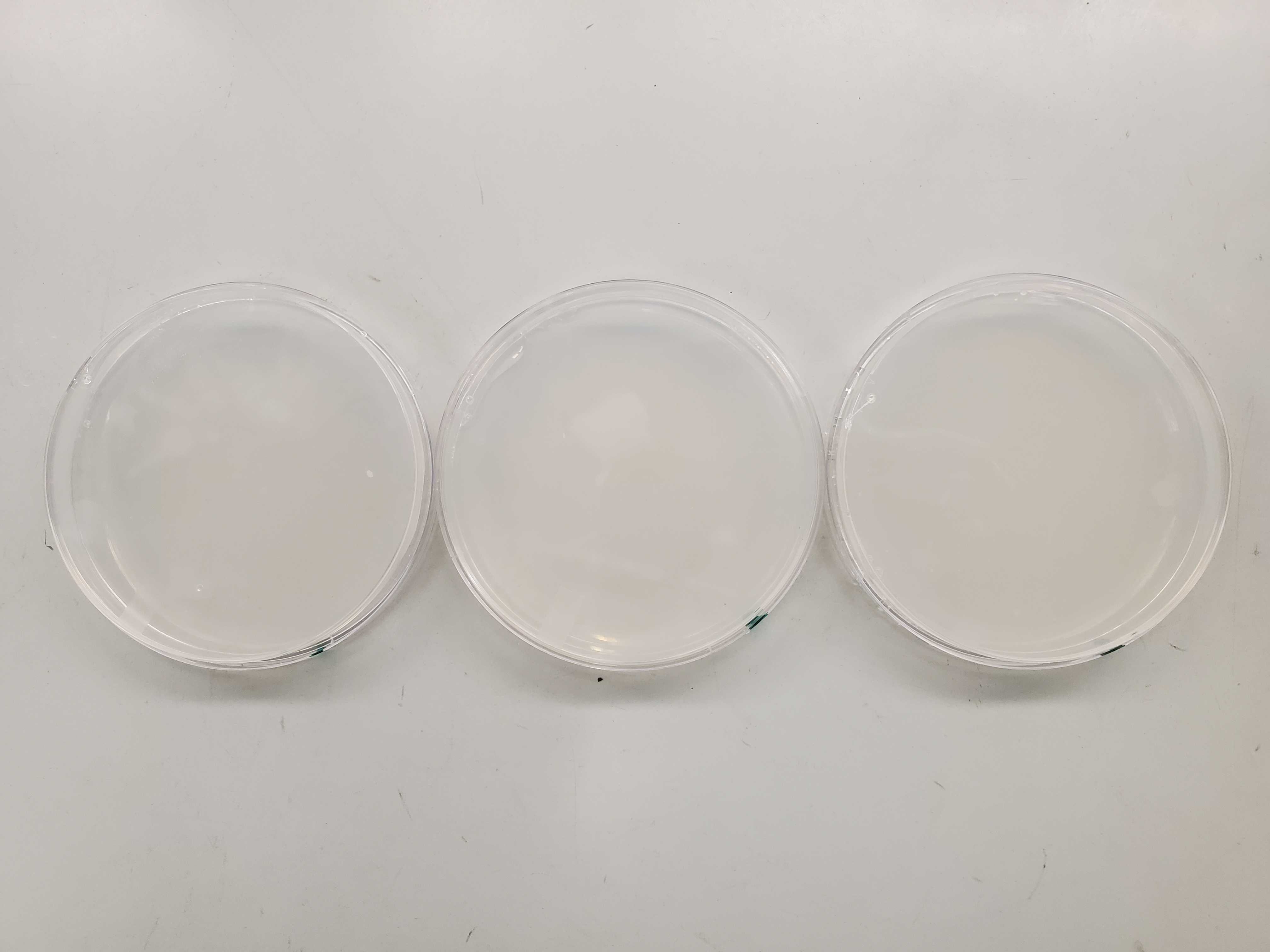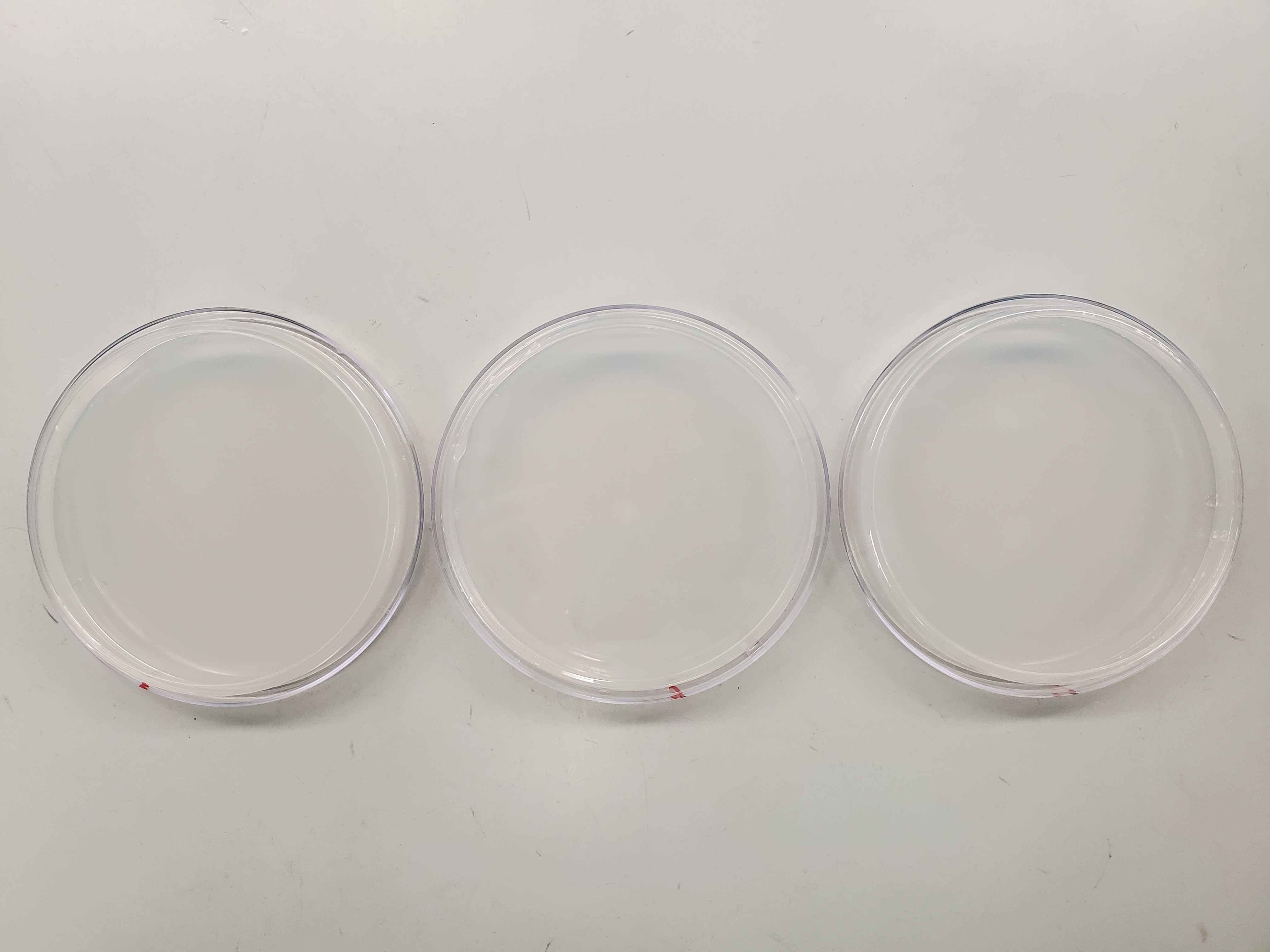LTEE Media Recipes
Jesus E Chavarria-Palma, Zachary D Blount, Jeffrey E Barrick
Abstract
This protocol describes recipes to prepare growth media and reagents used in the E. coli long-term evolution experiment (LTEE).
Section 1: DM-glucose , Davis-Mingioli liquid medium supplemented with glucose
Section 2: Sterile Saline
Section 3: TA agar , Tetrazolium Arabinose agar
Section 4: MG agar , Minimal Glucose agar (equivalent to DM agar)
Section 5: MA agar , Minimal Arabinose agar
Section 6: MC agar , Minimal Citrate agar
Section 7: CC agar , Christensen Citrate agar
Section 8: Stock Solutions , detailed instructions for stock solutions needed for media preparation
DM-glucose: Davis-Mingioli medium (or sometimes called Davis Minimal medium) supplemented with glucose is used for propagating the LTEE populations and for performing related experiments. For propagating the LTEE, glucose is added to a concentration of 25 mg/L, which we refer to as "DM25". DM25 supports a stationary-phase density of about 5×107 cells/mL for E. coli REL606 and REL607, the founding strains of the LTEE. (The stationary-phase density of evolved LTEE clones varies, but tends to be approximately half that of the ancestral strains.) DM with higher concentrations of glucose is used for reviving cells from freezer stocks or for growing many cells to harvest for certain experiments. These other DM formulations are named in an analogous fashion of DMX, where X is the concentration of glucose in mg/L (e.g., 1000 mg/L glucose in DM1000).
Sterile Saline: Used to dilute E. coli cultures, for instance when plating on agar to isolate colonies or to count CFUs to determine cell titers.
TA agar : Tetrazolium Arabinose agar plates are used for distinguishing E. coli cells that can grow on the sugar arabinose (Ara+) from those that cannot (Ara–). Plating dilutions that give 150-250 colonies are used for monitoring the LTEE for contamination and also for co-culture competition assays that measure the relative fitness of two strains. Colonies grown from Ara– cells appear red on TA agar, while those of Ara+ strains appear pinkish-white. These phenotypes are very clear after 24 hours of incubation at 37°C for the REL606 (Ara–) and REL607 (Ara+) ancestors of the LTEE. Colonies of evolved clones can exhibit a wide variation of these color phenotypes. Some evolved clones may take longer than 24 hours to form visible colonies on TA.
MG agar : Minimal Glucose agar has the same base composition as DM-glucose liquid medium, except agar is added as a solidifying agent, and the glucose concentration is increased to 4 g/L to support the growth of colonies. Plating dilutions that give 150-250 colonies or streaking out on MG-agar is used to isolate colonies from LTEE populations. Dilutions of the LTEE populations can also be plated on MG agar to monitor for unexpected growth, colony appearance, or CFU numbers that could indicate contamination. Ancestral clones form colonies within 24 hours on MG agar. Evolved clones typically also form colonies within 24 hours on MG agar, but some may take longer. Evolved clones also generally produce larger colonies than the ancestors on MG.
MA agar : Minimal Arabinose agar is the same as MG agar except that the sugar arabinose is used instead of glucose. Ara– cells like those of strain REL606 will not form colonies on MA agar. Only Ara+ cells like those of strain REL607 will. Plating dilutions from the LTEE populations that give 150-250 CFUs on MA agar can be used to monitor the Ara– populations for contamination from Ara+ populations. The Ara+ancestor and evolved strains generally form colonies within 24 hours on MA agar. However, some Ara+ populations have lost the ability to form colonies at later generations. Plating a large number of Ara– cells (>109) on an MA plate can also be used to select spontaneous mutants that have reverted from the Ara– marker state to the Ara+ marker state. Reversion to Ara+ among LTEE clones is usually via a single nucleotide substitution mutation in the araC gene. This mutation occurs at a rate of ~1010 cells/generation among non-mutator clones, and much higher among clones with mutator phenotypes.
CC agar: Christensen Citrate agar is an indicator medium that can be used to detect weak citrate utilization in colonies on the basis of a color change even, for strains that may not be able to form colonies on MC agar.
Steps
DM-glucose: Davis-Mingioli liquid medium supplemented with glucose
To prepare 1L of DM, follow these steps.
Weigh dry components:
a. 5.34g of 7gof
b. 2g of
c. 1g of
d. 0.5g of
Add distilled water to a final volume of 1L
Autoclave for 1 hour at 121°C and a pressure of 15 psi or higher.
After autoclaving add the following stock solutions:
a. 1mL of previously autoclaved 10Mass / % volume
b. 1mL of filtered sterilized 0.2Mass / % volume
If preparing DM-glucose, add this volume of 10Mass / % volume , to get the desired final concentration:
| A | B | C | D | E |
|---|---|---|---|---|
| 250 µL | DM25 | 0.0025% | 25 mg/L | 139 µM |
| 1 mL | DM100 | 0.010% | 100 mg/L | 694 µM |
| 2.5 mL | DM250 | 0.025% | 250 mg/L | 1.39 µM |
| 5 mL | DM500 | 0.05% | 500 mg/L | 2.78 mM |
| 10 mL | DM1000 | 0.1% | 1000 mg/L | 5.55 mM |
| 20 mL | DM2000 | 0.2% | 2000 mg/L | 11.1 mM |
| 0 mL | DM0 | 0.0% | 0 mg/L | 0 mM |
Sterile Saline
To prepare 1L of Sterile Saline (0.85% w/v), follow these steps.
Add 8.5g of
Add distilled water to 1000mL
Autoclave for 1 hour at 121°C and a pressure of 15 psi or higher.
TA agar: Tetrazolium Arabinose agar
To prepare 1L of TA agar, follow these steps.
Prepare basal medium by combining in a 2 L flask into which a stir bar has been placed:
a. 1g of
b. 1g of
c. 5g of
d. 16g of
e. 1mL of
Add distilled water to 800L
Separately, prepare sugar solution by combining:
a. 10g of
b. 200mL of distilled water
Autoclave both the basal medium and the sugar solution separately for 1h 0m 0s at 121ºC and 15 psi or higher.
When the basal medium has cooled to the point at which its flask can be touched with the back of the hand for 5 second without pain, add 1mL of 5Mass / % volume and sugar solution for a total of 1L. Place flask with combined medium on a stir plate and stir at medium speed for 5 minutes to fully mix.
Note: TTC stock should be filtered sterilized and stored at 4°C. TTC is sensitive to light, so bottles of TTC stock solution should be stored in the dark and wrapped in foil to reduce light exposure.
Pour plates. 1L will make approximately 35-45 plates. TA agar plates can be stored for at least one to two months at 4°C or one to two weeks at room temperature. While bacterial colonies will form on older medium, the TTC breaks down over time, reducing color differentiation between sugar− and sugar+ colonies. Exposure to light increases the rate at which TTC in the medium breaks down.
MG agar: Minimal glucose agar
To prepare 1L of MG agar, follow these steps.
MG agar is composed of 3 solutions (basal salt solution, agar solution, and sugar solution), which must be prepared and autoclaved separately . If combined and autoclaved together, the components will react to produce compounds that will inhibit bacterial growth.
Prepare basal salt solution by combining:
a. 5.3g of
b. 2g of
c. 1g of
d. 0.5g of
e. 400mL of distilled water
Prepare agar solution by combining:
a. 16g of
b. 1mL of 5% (v/v)
c. 400mL of distilled water
Prepare sugar solution by combining:
a. 4g of
b. 200mL of distilled water
Autoclave basal salt, agar, and sugar solutions for 1h 0m 0s at 121°C and at least 15 psi.
After the three parts have been autoclaved, combine the contents of the three flasks together while they are still warm add the following stock solutions:
a. 1mL of 10Mass / % volume (separately autoclaved stock)
b. 1mL of 0.2Mass / % volume (filter sterilized stock)
MA agar: Minimal Arabinose agar
To prepare 1L of MA agar, follow these steps.
Follow the instructions for MG agar, with the exception of the substitution of
in the place of glucose.
MC agar: Minimal Citrate agar
To prepare 1L of MC agar, follow these steps.
Follow the same steps as for making MG agar, but with the following modifications:
-
Do not prepare a sugar flask . You will thus have only two flasks: one for the basal salts solution and one for the agar solution . You will thus divide the
1Lof distilled water between just these two flasks. -
To the basal salts solution, you will add
4.5gofinstead of 0.5 g of a sugar.
When done,
CC agar: Christensen Citrate agar
To prepare 1L of CC agar, follow these steps.
In a 2 L flask into which has been placed a stir bar, combine the following:
a. 3g of
b. 0.2g of
c. 0.5g of
d. 0.1g of
e. 0.4g of
f. 1.0g of
g. 5.0g of
h. 0.08g g of
i. 0.012g g of
j. 15g of
k. 1L of distilled water
Adjust pH to 6.7 with NaOH (1 N or 10 N).
Autoclave solution for 1h 0m 0s at 121°C and at least 15 psi.
Pour plates. 1L will make approximately 35 - 45 plates. CC agar plates can be stored at room temperature for up to 4 months or at 4ºC for up to a year.
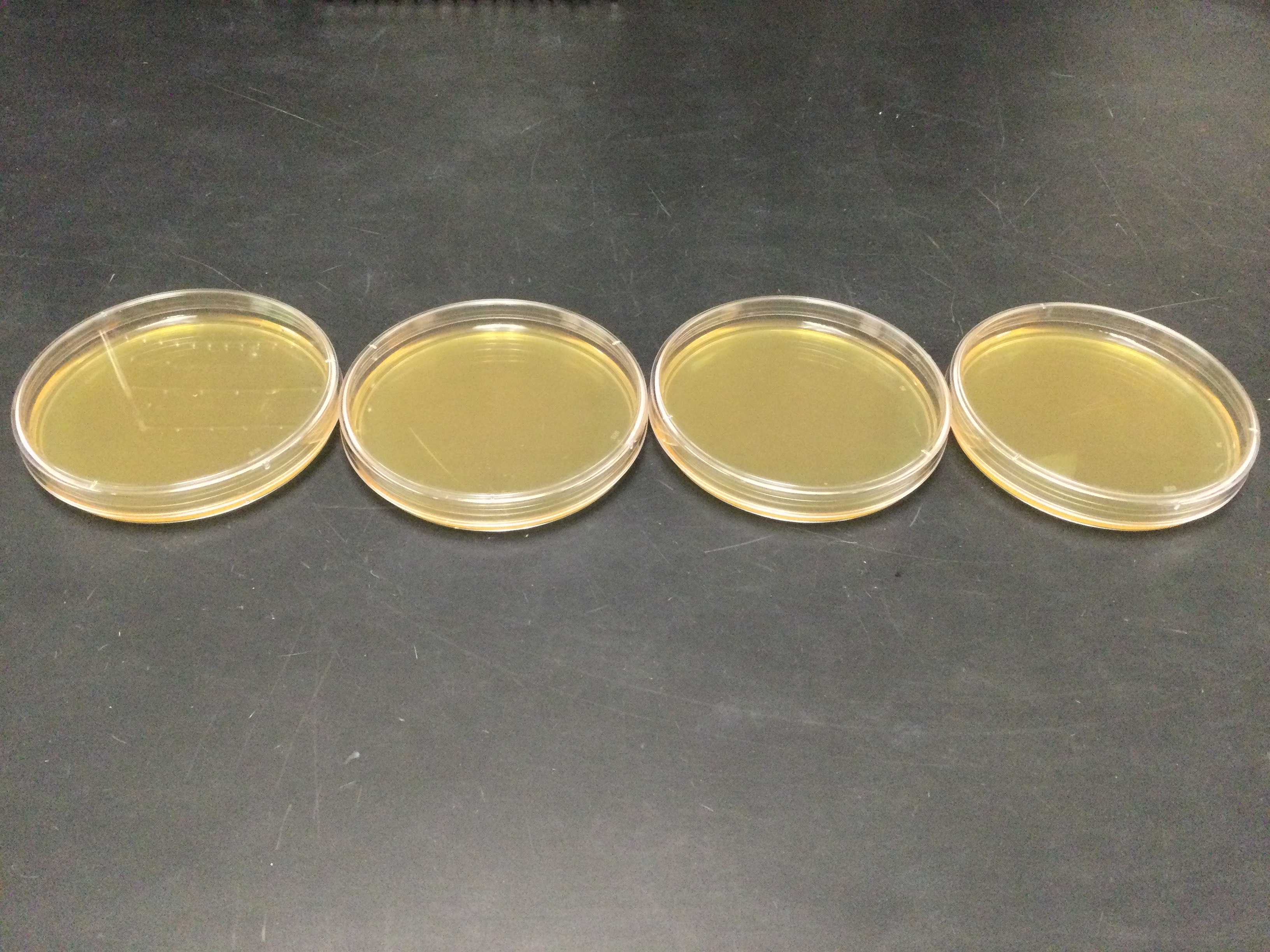
Appendix: Stock solutions
This section describes in more detail how to make each the stock solutions required for the above recipes.
10% (w/v) MgSO4 4
Add 25g of 250mL . Fully mix by swirling as you do so. Pour the solution into a 250 mL bottle. Autoclave to sterilize. Store at Room temperature .
0.2% (w/v) Thiamine
Add0.5g of 250mL . Fully mix by swirling as you do so. Filter sterilize the solution into a pre-autoclaved 250 mL bottle. Store at 4°C .
Note : This solution is 0.2% (w/v) in thiamine•HCl — NOT in thiamine. The concentration of thiamine is actually 89.2% of this or 0.178% (w/v) if you account for the fact that the reagent being dissolved is not pure thiamine. (The molecular weight of thiamine•HCl is 337.27, and the molecular weight of HCl is 36.46).
10% (w/v) D-Glucose
Add 25g of 250mL . Fully mix by swirling as you do so. Pour solution into a 250 mL bottle. Autoclave to sterilize. Store at Room temperature .
Note: D-Dextrose is a synonym for D-glucose that you may find on many reagent containers. Typically, if D- is not specified in the labeling, you can assume that it is the correct D-sugar.
5% (w/v) Triphenyltetrazolium chloride (TTC)
Add 5g of 100mL . Fully mix by swirling as you do so. Filter sterilize the solution into a pre-autoclaved 100 mL bottle. Store at 4°C. Wrap the bottle in foil. TTC is sensitive to light and can degrade over time.
Note : The final solution should be a pale yellow color.
5% (v/v) Antifoam solution
Add 12.5mL of 237.5mL of distilled water in a 250 mL glass bottle. Autoclave to sterilize.
Note: The reagent from Sigma-Aldrich comes as a 10% emulsion in water. This stock solution is 5% (v/v) of the reagent, so it is actually 0.5% v/v of Antifoam B.

